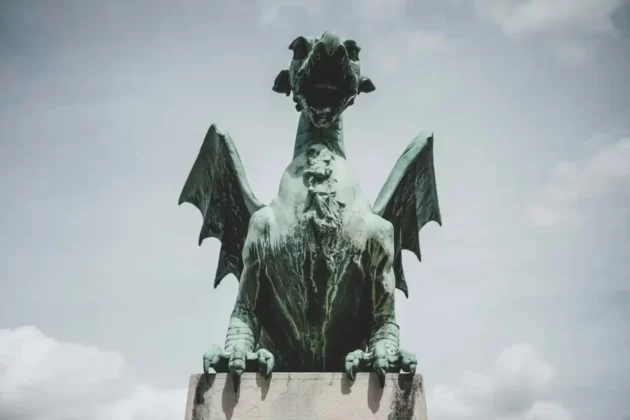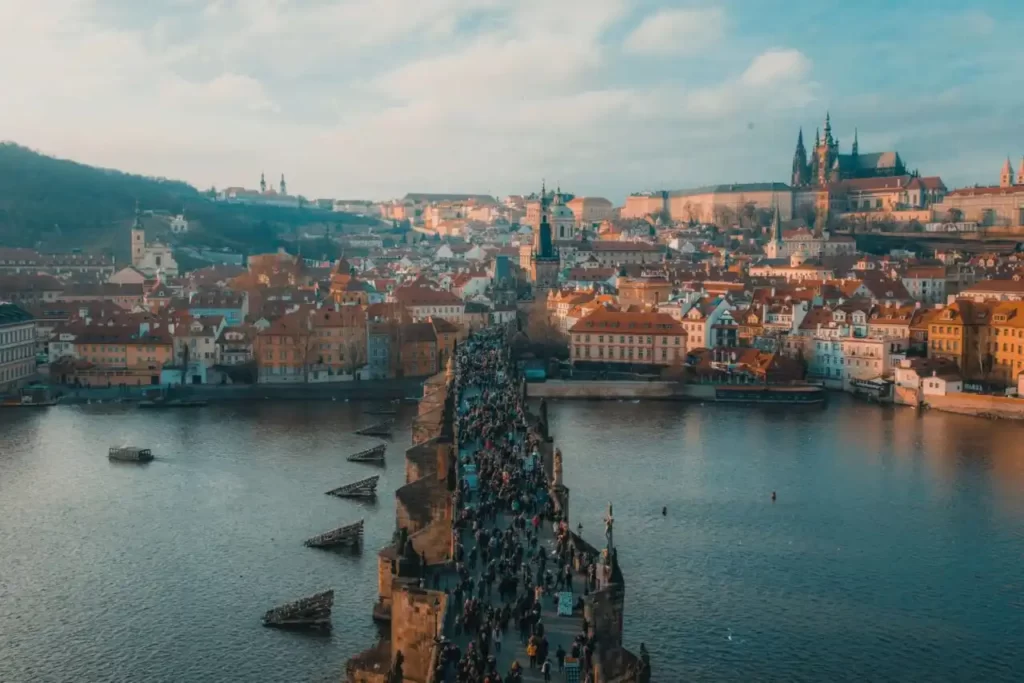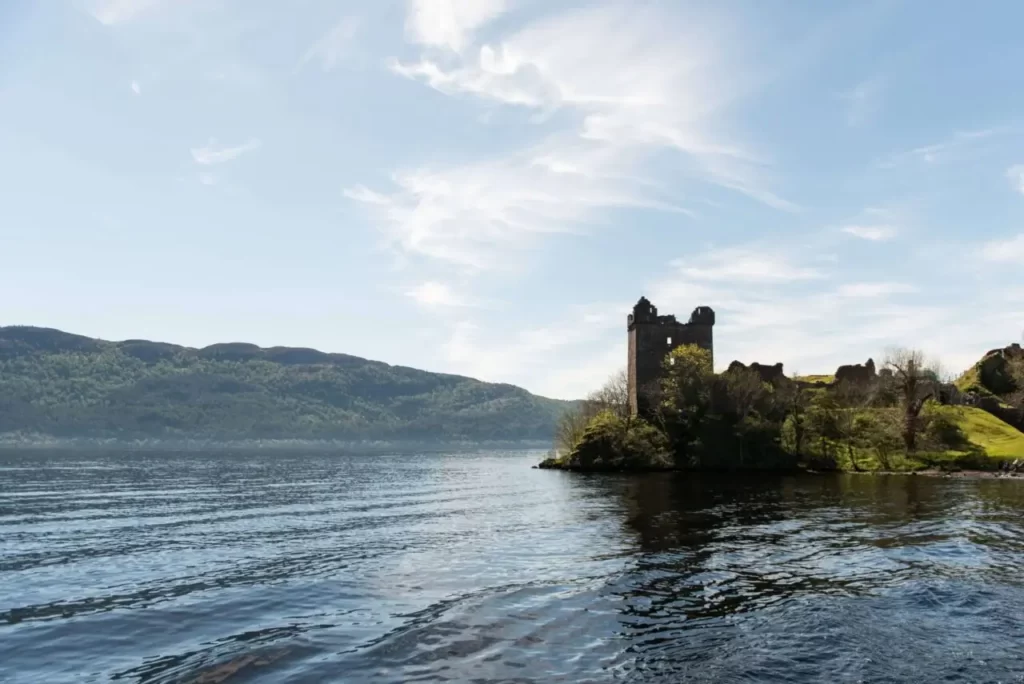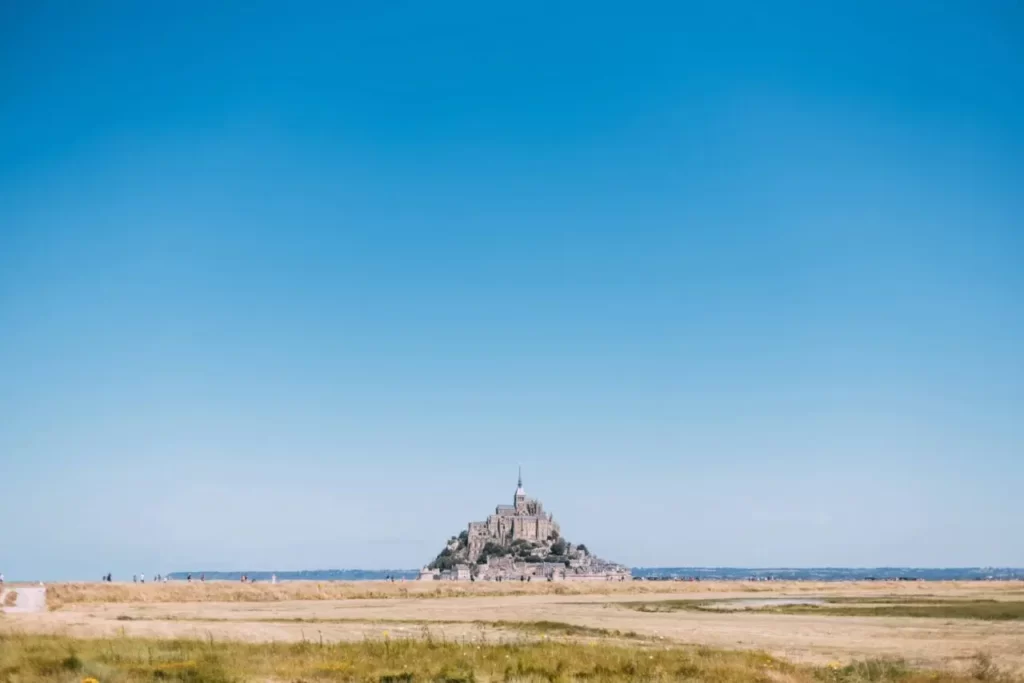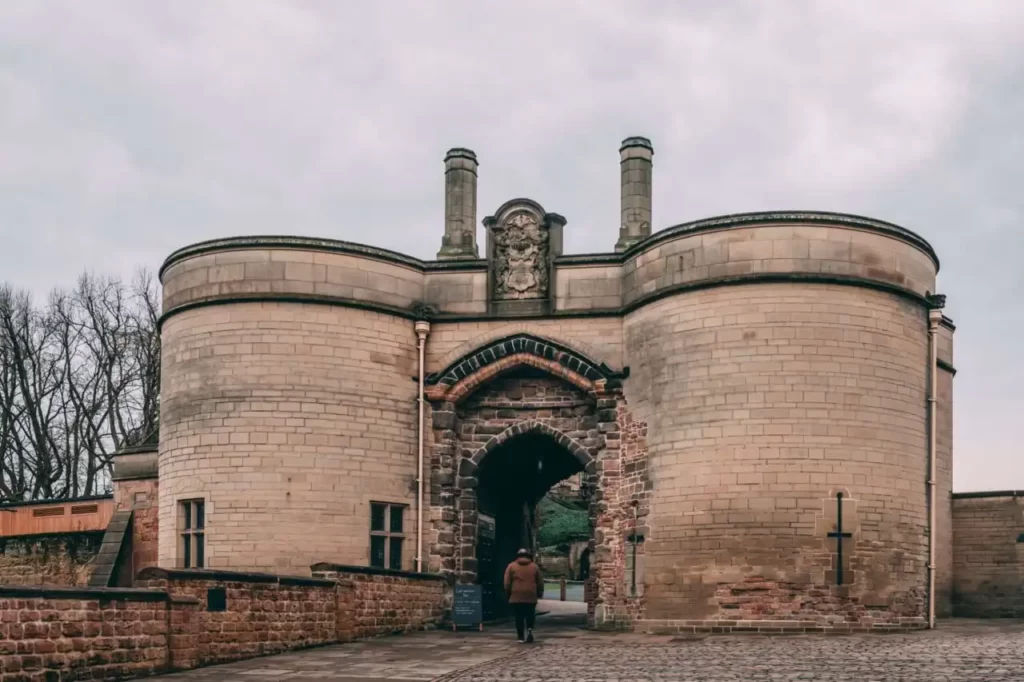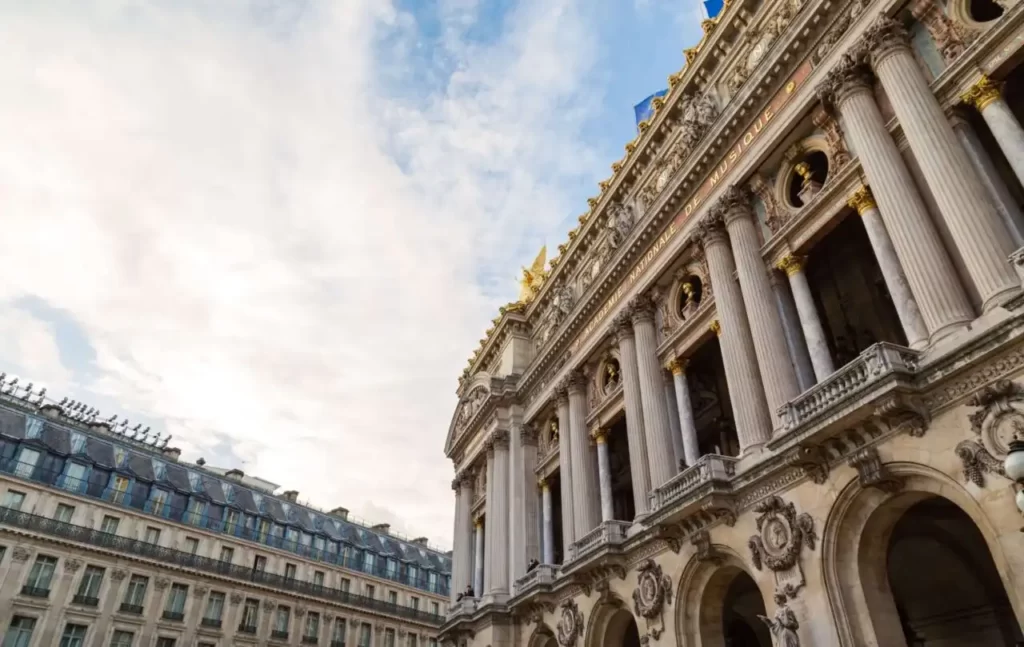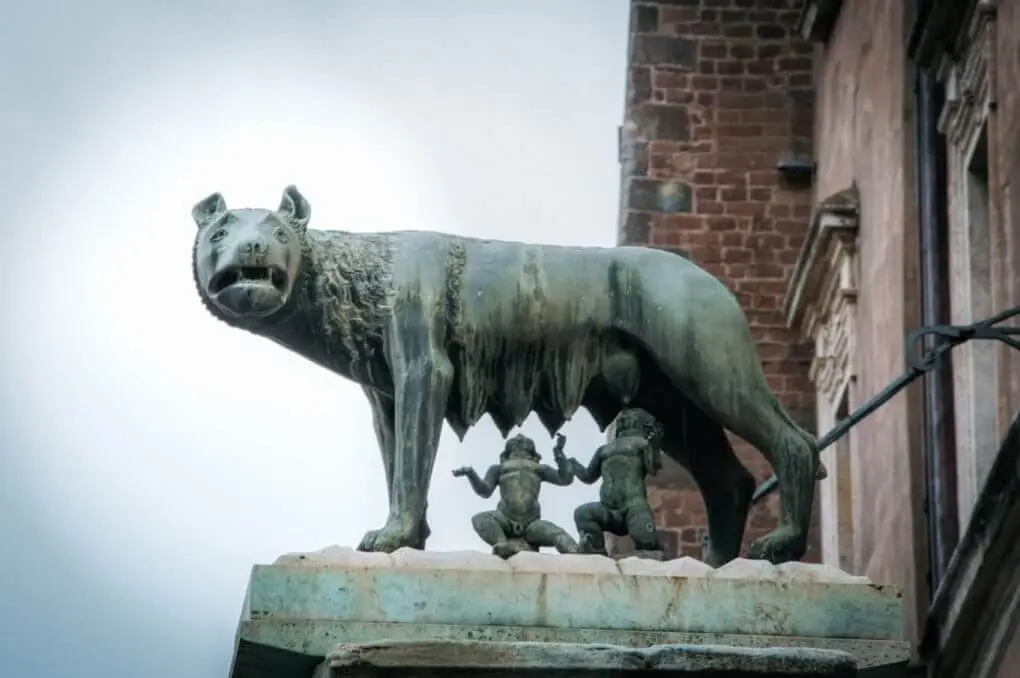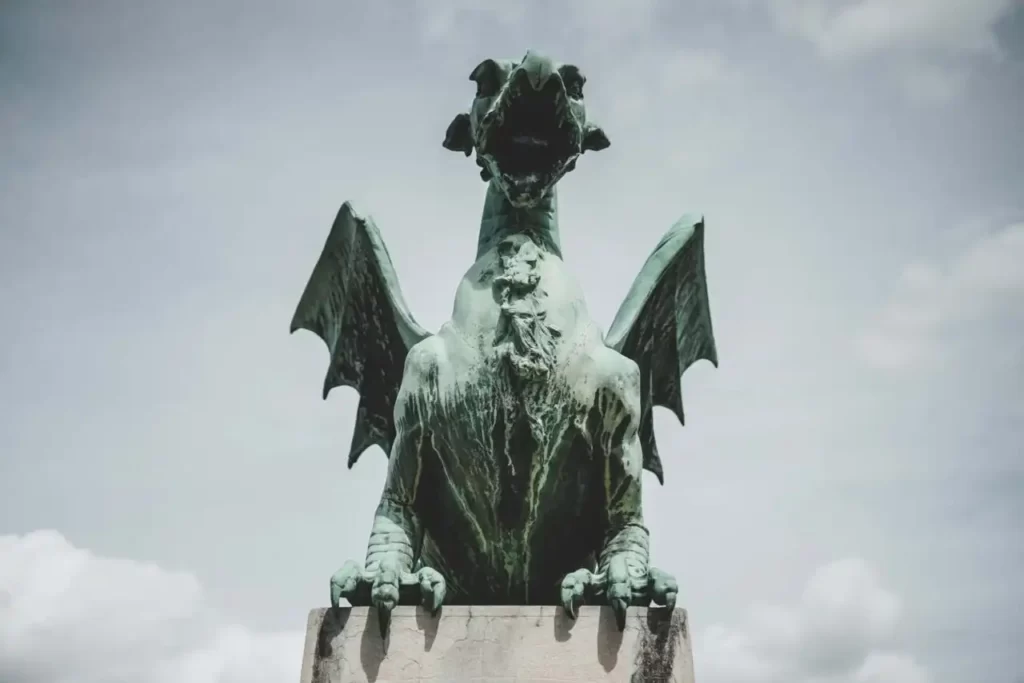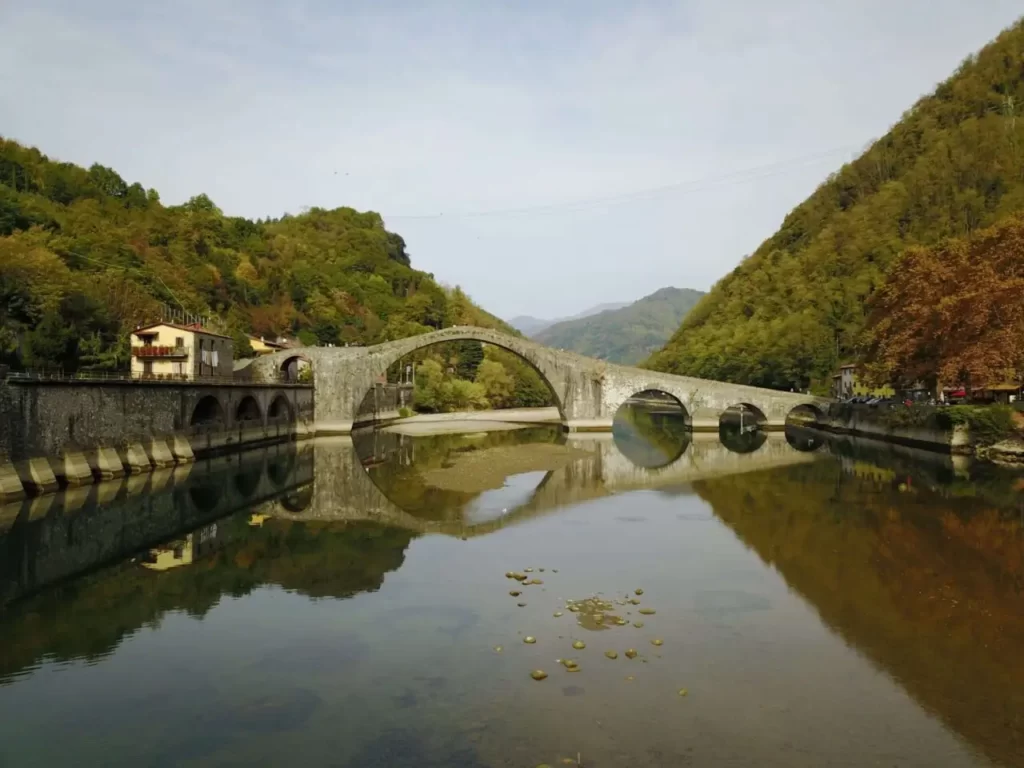The Old Continent is filled with history, rich heritage and many beautiful monumental buildings. When travelling around it, you’ll often hear some interesting stories about them. To give you just a glance of them, we compiled here a list with some of the most interesting European myths and legends worth knowing about.
The most interesting European myths and legends
To share some of the best of what Europe has to offer with you, I asked some of my fellow travel writers to help me out and send me some of their favourite European myths and legends. And here they are…
⤷ Read more: 15 best museums in Europe
The Prague Golem – Czech Republic
In the 16th century, Holy Roman Emperor Rudolph II tried to expel or eradicate all the Jews in Prague. To help protect the Jewish people from persecution, Rabbi Judah Loew ben Bezalel created the Golem – an artificial being made from clay and mud brought to life. With the Golem as their protector, the Jews of Prague were safe… for a while.
Stories differ on what happened next: some say that one Friday, Rabbi Loew forgot to remove the Golem’s shem – the sacred writing that gives a Golem its power – and feared that it would desecrate the Sabbath. Other stories tell that the Golem simply became too powerful and began to destroy things at random.
In either case, Rabbi Loew was forced to permanently stop the Golem, and it crumbled into pieces, which legend tells are still being held in the Old New Synagogue of Prague to this day. The Golem’s legendary feats can still be read about in many of Prague’s books about golems, and you can even visit the Golem Bakery near the Old New Synagogue for a delicious Golem-shaped sweet treat!
/Jeremy from Dark Distractions/
The Loch Ness Monster – Scotland
The Loch Ness Monster, or Nessie, as it is more colloquially known, is a creature that inhabits the deep waters of Loch Ness. This Scottish lake, just outside of Inverness, is one of the deepest lakes in the country and contains the most water. In fact, the waters here are an interesting colour, almost tar-like, thanks to the residue of peat that runs from the hilltops into the lock.
It is there, deep in its depths, a creature is believed to lurk. Many people are said to have spotted the Loch Ness Monster that is often depicted or remarked upon as being lizard or dragon-like. In 1933 a photograph was even taken, the first in a number over the years, that appeared to show a huge creature in the middle of the lake. Since then, there have been over a thousand sightings of this ambiguous animal, although despite extensive radar investigation, concrete evidence is proving elusive.
If you’re taking a family holiday to Scotland, then a trip to Loch Ness, including a boat trip across the water, is an absolute must.
/Nichola from Family Hotel Expert/
Archangel Michael at Mont Saint Michel – France
Mont Saint-Michel is a place shrouded in different myths and legends. This tiny island located in Normandy in northern France and dates back to the 8th century. It’s a popular tourist attraction and a beautiful spot for sightseeing and learning about the fascinating local history.
Mont Saint-Michel was actually constructed because of a dream that Bishop Aubert of Avranches had in 708. The archangel Michael appeared to him and instructed him to build an abbey on the island. At first, the bishop ignored the dream, but Michael reappeared and is even said to have burned a hole in the bishop’s head as a reminder to construct the abbey. He is said to have whispered, “build it, and they will come” repeatedly until the bishop began construction of the first buildings in Mont Saint-Michel.
The bishop’s skull can still be seen today at the Saint-Gervais d’Avranches Basilica, and you can even make out the mark that the archangel left.
/Victoria from Guide Your Travel/
⤷ Read more: History of Travelling
Robin Hood – England
Robin Hood is a well-known tale of good versus evil, and love conquers all. He was a heroic outlaw in English folklore.
According to legend, Robin Hood was a skilled archer and swordsman who, along with his band of ‘merry men’ fought the oppression of corrupt authority figures like the infamous Sherriff of Nottingham and stole money and other riches from the rich to give to the poor. The existence of Robin Hood is just a fable as far as history knows. Still, there are references to characters of a similar description and name dating back to the 13th century.
Nottingham is the focal point for the legend, with battles and heists taking place at Nottingham Castle and Sherwood forest. Visitors to the city can get familiar with the legend of Robin Hood at multiple top attractions in Nottingham. There is also a week-long festival dedicated to the myth at Sherwood Forest in honour of the icon and his merry men.
/Steph from Book It Let’s Go!/
⤷ Read more: Most beautiful castles in Europe
The Myth of Ariadne, Theseus and Minotaur – Greece
The Greek myth of Ariadne, Theseus, and the Minotaur is deeply tied to the Palace of Knossos on Crete. Poseidon sent King Minos, who lived at the Palace of Knossos, a bull to sacrifice. The bull was so beautiful that Minos did not kill it. As revenge, Poseidon caused Minos’ wife to fall in love with the bull, producing the Minotaur as their offspring. Eventually, Minos banished the Minotaur to an elaborate labyrinth below the palace. It was so complex that no one could escape from it. After Minos’ son died in Athens, the Athenians were required to send young men and women as a tribute to Knossos to be sacrificed to the Minotaur.
The great Greek hero Theseus volunteered to be sent to kill the Minotaur and free Athens from the sacrifice. Upon arriving in Crete, he met Minos’ daughter Ariadne, who fell in love with him. She cleverly thought up a way for Theseus to find his way in the labyrinth using a ball of thread to unroll as he went. This allowed him to escape after he killed the Minotaur in battle. Theseus and Ariadne fled Crete and moved on to further adventures.
Modern-day travellers can explore the myth at the actual archaeological site of the Palace of Knossos and the nearby Heraklion Archaeological Museum. Visiting is a profound experience for anyone interested in archaeology, mythology, or history. Knossos is often referred to as the first European city. The technological and architectural wonders are very advanced for their time. In fact, the structures undergirding the palace are so complex that they are thought to be the labyrinth itself. There is also extensive artwork representing bulls throughout the palace complex. Additionally, there is an area on the grounds where ancient Minoans practised bull-leaping. Visitors today can marvel at the overlap between the myth of the Minotaur and the Palace of Knossos.
/Erica Forrest from Tripscholars/
Phantom of the Opera Garnier in Paris – France
The legend of the Phantom of the Opera is a mystery that hovers over the famous Opera Garnier in Paris. The tale began with a love story between a pianist and a ballerina. Unfortunately, in 1873, a major fire broke out in the music conservatory where they both met. His fiancée, as well as many other people, died.
Although the pianist survived, his face was seriously injured. Then all the Parisians looked at him as if he was a monster. Therefore, he decided to hide in the basement of the Garnier Opera House and finished his days there. Because of a series of strange and unexplained events happening in the building, people started to talk about the Phantom of the Opera haunting the basement.
In 1910, Gaston Leroux took inspiration from this legend to write the famous worldwide book The Phantom of the Opera. Many films and musicals were adapted from it, making it one of the most interesting European myths and legends.
The Palais Garnier is a stunning opera house built at the end of the 19th century. It’s a masterpiece of architecture combining the Baroque, Classicism, and Renaissance styles. It’s one of the best places to take photos in Paris! You can visit it and attend some operas and ballets there.
/Ophelie from Limitless Secrets/
Finn McCool – Northern Ireland
Finn McCool is one of the most iconic mythological figures in European history. His most famous legend is linked with one of the best places to visit in Northern Ireland. That legend being his creation of Giant’s Causeway as a walkway from Northern Ireland to Scotland.
Giant’s Causeway was destroyed by the Scottish giant Benandonner. More than sixteen metres tall Finn disguised himself as a baby after seeing Benandonner’s even larger size. Benandonner fled Northern Ireland, thinking if Finn’s baby is that big, Finn must be even bigger and ripping up Giant’s Causeway.
Giant’s Causeway is a UK National Trust area, National Nature Reserve, Special Area of Conservation, Natural Beauty, and UNESCO World Heritage Site. Many other Finn McCool places are nearby. The Finn McCool’s pub in Bushmills is the closest such named place.
About 56 kilometres away, Lough Neagh was allegedly formed as Finn McCool scooped a chunk of land to throw at Benandonner. That chunk of land became the Isle of Man. I can trace my McCool family to the 1660s at a spot only six miles from Lough Neagh. So, is Finn McCool really a myth or actually one of my ancestors? Hmmm…
/Charles McCool from McCool Travel/
Athens and its name – Greece
One of the most famous European myths and legends is the one about Athens getting its name. Athens was the most powerful city in ancient Greece. Some of the gods of Olympus wanted to become patrons of the town. The two main contenders were Athena, the goddess of wisdom and courage, and Poseidon, the sea god.
Zeus declared that they should each give a gift to the people of Athens and let them decide which was the greatest gift and who they would like as patron. Everyone gathered on the Acropolis to see what gifts they would be given by the two gods. Poseidon strode into the clearing in the centre and struck a rock with his trident. Water gushed forth, and everyone was impressed by the idea that they would have a good water supply. But those who drank the water were disappointed to find that it was salty like seawater.
Athena stepped forward, carrying a tiny seed. She carefully planted the seed in the ground, and a beautiful olive tree quickly grew. Everyone declared that Athena was the winner, as the olive tree would give them food, oil, firewood and shade. The city was named after Athena, and she was proclaimed the city’s patron. The sacred olive tree still grows on the Acropolis, making it a part of one of the most exciting European myths and legends.
/Chrysoula from Athens and Beyond/
⤷ Read more: Famous Greek mythology stories
Romulus and Remus – Italy
The most famous Rome myth that of Romulus and Remus has to do with the actual foundation of the city on April 21, 753 BC. And, with that, of the Kingdom of Rome, which later on became the most mighty empire of the time.
Legend has it that Romulus and Remus were born in Alba Longa, southeast of Rome, which was the head of the old Latin League. Their grandfather was Numitur, the king of Alba Longa, deposed by their uncle, Amulius. The latter saw them as a threat to his rule and ordered that they were killed. The twins were thus abandoned on the banks of the Tiber River, where they were rescued by Tiberinus, God of the River, who gave them to a she-wolf who’d care for them in her cave home, the Lupercal – located at the base of the Palatine Hill.
They were then taken by Faustulus, a shepherd who brought them up tending to his animals and did not know about their royal origins.
Once they grew up, Romulus and Remus became involved in an argument between Numitur – the former king of Alba Longa and their grandfather – and Amulius. Remus was made a prisoner, and it was then that his identity became clear. Freed from prison by Romulus, the brothers and Numitur joined forces against Amulius and set up to find their own city. However, they disagreed over which hill it had to be founded on. The argument ended up with Remus being killed and with Romulus becoming the first king of Rome.
/Claudia Tavani from Strictly Rome/
⤷ Read more: The most famous Rome myths and legends
The legend of the Huldra – Norway
Like with many other European myths and legends, the story of the Huldra in Norway has evolved over the years. So there are several variations to this Scandinavian folk legend. As the legend goes, the Huldra was a beautiful forest creature who appears human but with a cow’s tail.
With her long blonde hair and stunning appearance, the Huldra is a known seductress who lures men into the woods. Some versions of the legend claim the Huldra seduces the men to gain her humanity. Other versions of the legend bring death to the men who are enticed away by her beauty.
If you take a scenic journey on the Flam Railway, one of the most popular things to do in Flam, Norway, you’ll hear the legend of the Huldra firsthand over the speaker in your railcar. The train makes a brief stop at Kjosfossen Waterfall. It is there, as visitors disembark from the train to gaze at the waterfall’s beauty that a woman emerges from the forest and dances to Norwegian folk song atop a cliff adjacent to the waterfall. The dance is a lovely and artistic depiction of the tale of the Huldra.
/Melissa from Parenthood and Passports/
⤷ Read more: 20 archaeological sites you have to visit in Europe
Sligachan Bridge – Scotland
Sligachan Bridge, located in the valley of the Black Cuillin, is one of the Isle of Skye’s most famous sites. However, not everybody knows the story behind it, which is absolutely one of the most interesting European myths and legends.
Irish fighter Cú Chulainn set sail to Skye after hearing about the strength of warrior princess Scáthach. Upon his arrival, they fought for weeks. The battle was so fierce that it profoundly changed the landscape of Skye, sending cracks across the island, forming valleys and mountains.
When it dawned on Scáthach’s daughter that this would be a fight to the death, she fled to Sligachan Bridge. She sat at the water’s edge, pleading for the violence to end. However, she wasn’t aware that the river is the gateway to the fairy world.
The fairies heard her pain and instructed her to dip her head below the water’s surface for seven seconds. Once she rose, she knew what she must do. She made a delicious stew, fanning the smoke across the hills.
The two warriors got a sniff of the meal and agreed to take a break from fighting. After arriving at Scáthach’s home, they ate together. By eating in Scáthach’s home, Cú Chulainn was her guest, and neither fighter could hurt the other. The war was finished.
/Sheree Hooker from Winging the World/
The White Stag – Hungary
One of the most famous and historically essential legends in Hungary, is the story of the white, wonderous stag, It’s one of the most interesting European myths and legends that has a few similar versions.
When twins Hunor and Magor went for a day of hunting with their father, Ancient Mesopotamia’s King Nimrod, they spotted a white stag and decided to chase it. It led them to take a long journey further and further to the west. Each night the stag would disappear, only to reappear again in the morning. As they continued their journey, they discovered new lands they had never seen or known before.
One morning, they saw a group of young women dancing and singing by the river banks. They turned out to be the daughters of a local king. After marrying two of them, the twins settled in a part of this newly discovered land. Hunor’s descendants became the Huns, while Magyar’s descendants became the Magyars. Their union, later on, was believed to be the birth of the Hungarian nation.
/Or from My Path in the World/
Dragon of Ljubljana – Slovenia
The city of Ljubljana is connected to its symbol, the dragon. You can find it on the coat of arm, bridge, castle, registration plates, local beer, etc. There are many stories about the origin of the Ljubljana dragon. Still, the most poetic one is about Jason and Argonauts.
After Jason has retrieved Golden Fleece from winged ram, he was on his way back home on board of ship Argo. By mistake, they got lost and sailed into the mouth of the Danube River. They continued upstream of Danube, then to Sava River and finally at the Ljubljanica River.
As winter came, they had to stop at a place where Ljubljana is located today. There lived a big and robust dragon in the swamp. After a fierce fight with the dragon, Jason won. In spring, they dismantled their ship and carried it to the Adriatic sea. From there, they sailed back home. In memory of that event, Ljubljana today has a dragon as the symbol of the city.
/Džangir Kolar from Drjamtravels/
⤷ Read more: Mighty Ljubljana’s dragon
Devil’s Bridge in Tuscany – Italy
The Ponte della Maddalena in Tuscany, better known as Devil’s Bridge, is a stone arch bridge built in the 14th century. It is located near Lucca, and one of the most interesting European legends is linked to its construction.
It says the construction work was difficult and could not be completed by the agreed deadline. So one day, the devil appeared to the builder, and they made a pact: the bridge was to be finished overnight. But in exchange for which the first soul to cross the stone bridge would be sacrificed. No sooner said than done, the following day, the huge bridge arch was ready.
But now, the builder had a guilty conscience and told the priest about his deed. The priest gave him a tip to keep the pact with the devil and drive a pig over the bridge first. So in the morning, a pig ran over the bridge first, whereupon the devil was so angry about the trick that he threw himself off the bridge and never let himself be seen again in this area.
/Martina & Jürgen from PlacesofJuma/
There are so many interesting stories in Europe, it’s impossible to put them all in one article. Do you know any other exciting European myths and legends? Share them with us in the comments.

